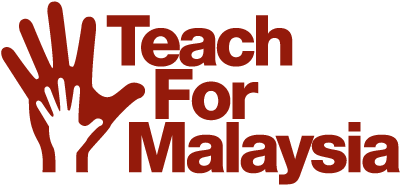“Assessments are valuable when they expand opportunities for students rather than limit opportunities.” — Herrick (1996) cited in O’Grady, Glen & Alwis, W.A.M. (2014)
In April 2021, the Ministry of Education announced that the Primary School Achievement Test (UPSR) will be abolished starting this year. For more than three decades, this national examination was taken by all students enrolled in national schools and national type schools at the end of Standard 6. The UPSR examination papers were prepared by the Malaysian Examination Syndicate (Lembaga Peperiksaan Malaysia), and covered core academic subjects students learned in primary school. Once completed by the candidates, the papers were marked against standard scoring rubrics anonymously and rigorously by professional examiners and machines.
Why does Teach For Malaysia support the abolishment of UPSR?
The abolishment of UPSR is an important step in creating a more conducive learning environment for our children and in ending education inequity in Malaysia.
For many Malaysians, UPSR was the first high-stake examination they sat for. Those who performed relatively well were typically rewarded financially and offered a place at an elite or residential school on the basis of their performance, while those who performed less well or suboptimally for any reasons tended to have more limited opportunities to attain an equally excellent education at secondary level. To elaborate, students are often streamed according to their UPSR results when they start secondary school education, thus setting them up to have self-limiting beliefs about their abilities before they even start their secondary school education. Those beliefs are reinforced by the perception teachers, other students and the community often have regarding students in “bottom classes” and remove classes.
The significance of UPSR results encouraged teachers to take an exam-driven approach to teaching, parents to send their children to multiple tuition centres after school hours, and students to see their exam grades as the sole purpose of studying or as a valuation of their worth and to be hesitant about supporting their peers. This was definitely not ideal, and has raised questions about the purpose of education and assessments, which Chan Soon Seng (CEO at Teach For Malaysia) talked about in an episode of the Table Talk Podcast.
Furthermore, at Teach For Malaysia, we believe that every child is different in terms of learning needs and goals, and that they will succeed in many different ways. By overvaluing standardised and centralised examinations, we fail to acknowledge the unique potential of individual children. To support children in realising their potential, we need a holistic approach to education, and with it, a holistic approach to assessments. A holistic education recognises and emphasises the importance of meeting the needs and goals of every student, as opposed to a more traditional approach to education that seeks to help students meet standards by quantifying their learning and understanding through standardised exams. Integral to the holistic education is holistic assessment–a comprehensive approach in assessing a student’s learning and development in a continuous manner by gathering relevant data from multiple perspectives–which we will explore further.
The ministry’s decision to abolish UPSR marks a historically significant moment and demonstrates its determination to drive a holistic education at primary school level. Despite three decades of implementation, the abolishment of UPSR did not come as a shock, as it clearly was not the first strategic action by the ministry to realise its aspiration to provide a holistic education to children in Malaysia. In Dec 2018, for example, the ministry announced that students in the first three years of primary schools will not be sitting for mid-year and end-year examinations from 2019 onwards. Instead of administering standardised examinations, teachers will be expected to assess students through school-based assessments involving quizzes, games, role-playing, simple projects and storytelling that are aligned with intended learning outcomes. Guidelines for school-based assessments are also included in KSSM, with six levels of mastery. The aim was to support the character development of individual students as a whole through alternative forms of assessments.
While we see that some measures have already been taken to put alternative assessments in place, the abolishment of UPSR means that we now have more time and freedom to adopt these alternative forms of assessments, as the abolishment helps shift mindsets and behaviours away from exam-oriented teaching and learning, and towards making learning enjoyable and relevant at primary level.
Why holistic assessments?
Some of us who went through an exam-oriented education and the unhealthy culture of ranking might be inclined to perceive assessments as a driver of learning outcomes that is separate from understanding. However, when well-designed, assessments can be a powerful enabler for student’s learning and growth. We will focus on holistic assessments in the rest of this article.
According to the experts, holistic assessments empower students to be leaders of their own learning by allowing them to take ownership of their learning. Through holistic assessments, students build confidence and desire to learn, track and make sense of their personal growth, discover their best potential and express their true ability, and develop knowledge, skills and habits that will help them thrive in the real world. Furthermore, with data from holistic assessments, teachers are able to adjust their pedagogical strategies to meet students’ needs and support students’ learning.
What could holistic assessments look like?
We now explore several examples of holistic assessments. These examples are: project-based assessment, portfolio assessment, peer assessment, group presentations, and self-reflective journals. Ideally, teachers combine two or more of these assessments in a way that best aligns with specific learning objectives and best suits the needs of students in the classroom. One key criterion of these assessments is that they involve active participation of students to shape their learning through the assessments.
i) In project-based assessment, students engage in real-world and personally meaningful projects that are related to the curriculum. For example, students may carry out research and apply what they learned to address a specific issue in their community, e.g. by creating and publishing podcasts that educate their peers about the issue. Instead of directing and managing students, the teacher’s role is to guide and advise students. By giving students voice and choice, project-based assessment allows students to obtain hands-on and authentic experiences that will prepare them for their career and build their confidence in creating positive impacts in the real world.
ii) Portfolio assessment encourages students to take ownership of their own learning and to make learning meaningful to them. Portfolios are collections of student’s works developed by students that demonstrate their knowledge and capabilities. These collections consist of student-chosen examples of real-life learning experiences related to the specified learning outcomes, and other evidence related to student’s growth and development in meeting the learning outcomes. As students develop their portfolios, they will explore diverse areas of interest and encounter many opportunities for self-directed learning, self-assessment, and self-reflection — lifelong learning skills that will help them grow personally and professionally outside of the context of school.
iii) In peer assessment, students assess and provide constructive feedback for their peers’ work. By participating in peer assessment, students will better understand the curriculum standards and gain skills in giving and receiving feedback. It also trains students to monitor their own learning progress instead of solely relying on feedback from teachers and others.
iv) Group presentations require students to discuss and complete a shared task together. Structured and organised group presentations enable students to develop quality work and understanding of the topics as well as lessen teacher talk in the classroom. Group presentations are also powerful in terms of developing soft skills that will help students thrive in the real world:. It also allows students to learn to communicate, actively listen, take responsibility for mistakes, and respect others as they attempt to work effectively as a team to tackle the challenges given.
v) Self-reflective journals enable students to critically reflect on their own learning experiences to make sense of and synthesise their diverse learning experiences. Through self-reflective journal writing, students are able to express their thoughts and feelings, identify personal strengths and weaknesses, and report personal learning and development. These opportunities are more than just invaluable to students who might feel uncomfortable to openly share in the classroom the takeaways from their self-reflection; students will develop the capability of self enquiry that will help them to meaningfully shift their perceptions and behaviours in ways that positively impact the outer world.
What are the challenges to effectively adopt holistic assessments and how can we tackle them?
The credibility of standardised examinations was built through decades of implementation. One of the most significant challenges that we face as we venture into a future of primary school education without UPSR and similar examinations is a need to build public trust in classroom-based assessments. In the context of holistic assessments, design and implementation of these assessments in the classroom require teachers to exercise professional judgement. Exercising professional judgment is more than just technically challenging for teachers who are accustomed to standardised assessments because teachers also face doubts from the rest of the society who value standardisation in assessing students’ academic capabilities.
A common misconception about standardisation of assessments (in terms of questions, marking schemes, time limits, exam conditions, candidate anonymity, etc.) is that standardisation removes all forms of biases in measuring students’ academic capabilities, including those that stemmed from teacher-student relationship. With the multitude of biases, however, we can be confident that standardisation only limits or eliminates some (instead of all) forms of biases. Standardised assessments do not, for example, take into account students’ extenuating circumstances and access to resources that can have significant impacts on students’ performance in the assessments. Meanwhile, holistic assessments designed and conducted by teachers in the classroom safeguard us against these biases, although they are susceptible to other forms of biases. Although we might not be able to create assessments that are free from all forms of biases, we should strive to implement inclusive assessments (such as holistic assessments) that will best prepare all students for their future.
To build public trust in teachers as a reliable source of information on students’ capabilities, we advocate for a transparent system that captures data relevant to implementation of the assessments and synthesis of understanding of student’s growth, in addition to raising parents’ awareness or shifting their mindsets about school-based assessments. The system could, for example, be based on blockchain technology which provides a high level of trust and security in evaluating, storing and sharing competencies and learning outcomes that students have achieved. Apart from building a transparent system, professional training and coaching should also be provided to in-service teachers to support them in adjusting their teaching practices, in developing relevant assessment tools, and in providing feedback to students.
Another challenge that our education system will need to address in shifting towards holistic assessments is the class size. While standardised assessments are easier to be administered to a large group of students, holistic assessments that require the active participation of every student and ongoing feedback from teachers are easier to be implemented with a smaller group of students. We acknowledge that class size reduction is not a decision that can be easily made. However, if we were to adopt holistic assessments, we need to ensure that this step is taken so the conditions are optimal in order for the assessments to truly benefit all students.
Despite these challenges and many others, Teach For Malaysia is optimistic about the future of primary education following the abolishment of UPSR. With the Covid-19 pandemic continuing to impact learning, the abolishment of UPSR will relieve the stress and anxiety that teachers and students tend to experience in preparing for it, and will free up valuable classroom time to allow teachers to remediate learning losses and make the learning time meaningful and enjoyable for the students.





